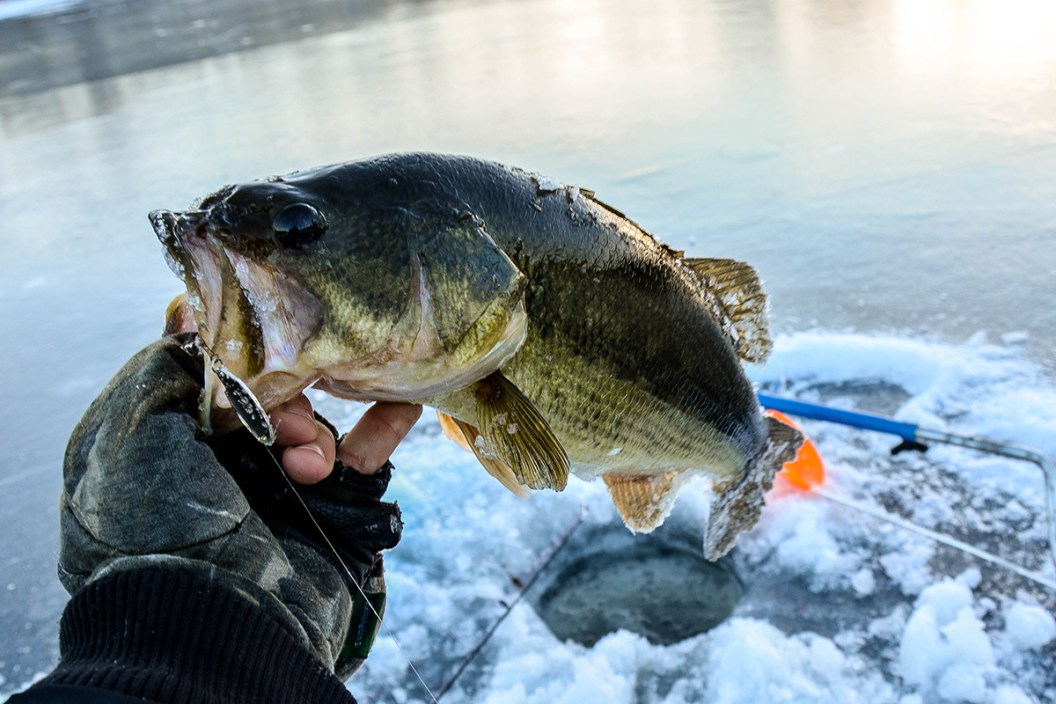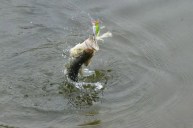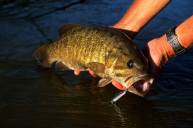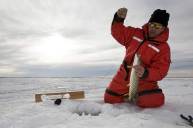"We're gonna need a bigger hole."
That's a common thought when ice fishermen land on a productive spot populated by largemouth bass—many of which will barely fit through the drilled opening.
Even moderate-size bass offer an engaging diversion from the usual mix of panfish, perch, walleye, and pike. That being said, North Dakota ice pro and TV host Jason Mitchell considers bass through the ice a largely underused opportunity.
"There are not many people who are targeting bass on purpose, with the exception of some guys who are running golden shiners on tip-ups," Mitchell said. "But it's a fun incidental thing you run into a lot when you're fishing for panfish, like bluegill and crappie.
"It can kinda ebb and flow. There will be stretches when they're just not biting and, a lot of times, the better action seems to coincide with a warm spell—especially during later ice—when you might catch five, six, seven of them in a day. You're mostly catching them by accident; but when you do, you're not complaining."
Now, folks below the ice belt might wonder how largemouth fare in frigid waters; but the fact is they live there, so it's nothing new. Sure, the species generally throttles down the feeding during winter; and just like anywhere a largemouth roams, iced-over bass definitely become lethargic during the colder months.
Nevertheless, the green goblins are there for the targeting. Here's how you can do it.
When and Where
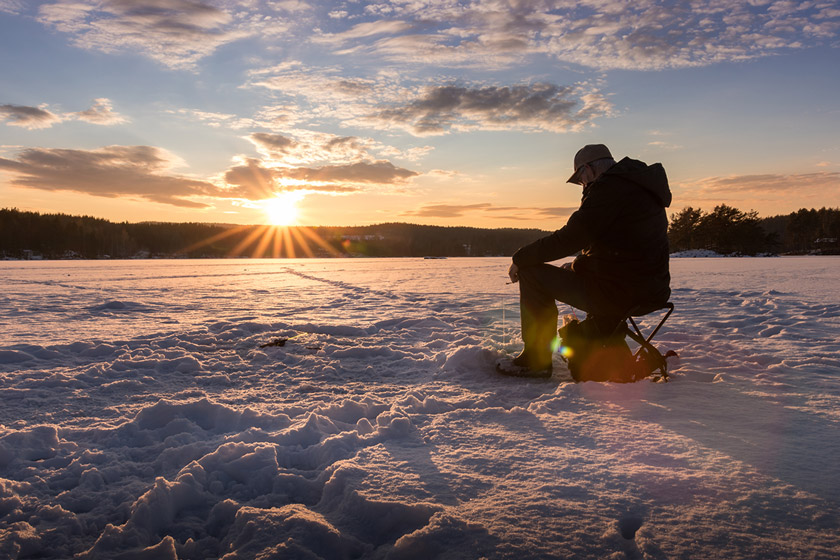
Getty: mariannehoy
While the warmer conditions of open-water season find largemouth targeting a mix of crawfish, panfish, and local baitfish, their decreased metabolism reduces dietary needs. They'll suck in any minnow that wanders too close, but Mitchell knows the bold and bulging largemouth are not above more-modest meals.
"Bass eat a lot of bugs in the wintertime," Mitchell said. "I don't think bass are looking for a big meal as much; I think they just nibble here and there just to get them through the winter. I've never seen a bass in the wintertime with a big tail sticking out of its gullet."
Weed beds hold a lot of those aquatic insects, so reference your lake mapping to find the shallow bays where reeds, pads, etc. typically grow. Vegetation frozen in the ice offers visual clues, but make sure you have sufficient depth below.
Hard-water season typically condenses the promising areas through seasonal vegetation die-off; but once you find remaining cover, it's often well populated. Insects and various foraged fish that eat them won't go unnoticed by hungry largemouth.
Late ice often sees largemouth and other fish pushing shallower, as melting edges and deteriorating holes bring an influx of oxygen and nutrients that ignite the food web. Early and midseason, Mitchell prefers deeper weed edges or rocks adjacent to soft bottom where cover and heat retention complement food abundance.
If winter claims all the weeds in a particular water body, the largemouth typically favor the flats near the first drop-off, adjacent to where those weeds had grown. On lakes lacking significant vegetation, look to the prominent contour breaks, stumps, humps, and channel bends.
Winter may find largemouth congregating on deep offshore structures, and Mitchell is quick to note conservation considerations.
"Sometimes, in deeper water, you might have a little barotrauma—injuries caused by sudden change in water pressure," he said. "Considering the susceptibility of these fish, if you find them bunched up in deeper water (25 feet or more), you're better off leaving them alone until spring."
Tempt Your Target
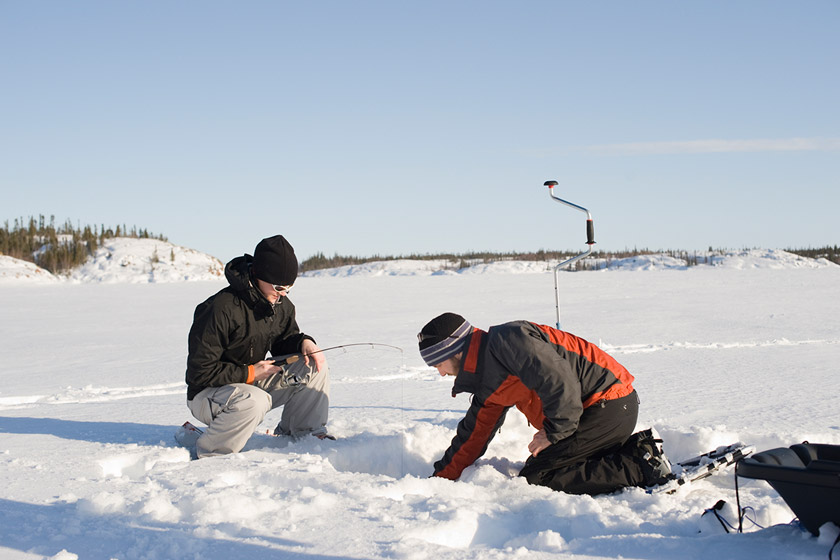
Getty: GROGL
Given the largemouth's winter lethargy, you'll consistently fare well with 1/16-to-1/8-ounce tungsten jigs tipped with small plastics that mimic aquatic insects. Glow colored jigs help the fish locate your bait in dim conditions, and tipping jigs with maggots helps push indecisive bass over the edge.
If a warming trend has the fish in a frisky mood, jigging rattle baits or spoons might trigger an aggressive bass. Varying your retrieves helps you dial in what the fish want, while free-lining a shiner is usually an easy sell for active fish.
In fairness, I move a lot slower in cold weather, too, so no disrespect to a shivering largemouth. However, engaging the big greenies through the ice is a different game than, say, frogging milfoil mats in July.
"They fight hard and they'll make a couple of big runs, but they don't fight like they do in the summertime," Mitchell said. "Take your time and, if you have a lot of weed stalks, go with fluorocarbon line.
"I've caught some big bass on 3-pound test. During the summertime, I don't know how you'd catch a big bass on 3-pound test. On the upside, a big bass is a big bass; and when you wiggle a hefty largemouth through that hard-water window, it's still gonna make for a nice bragging rights photo."
